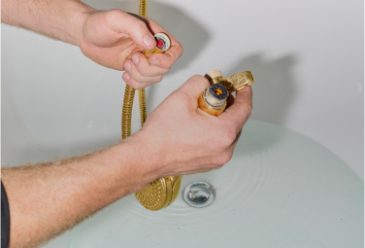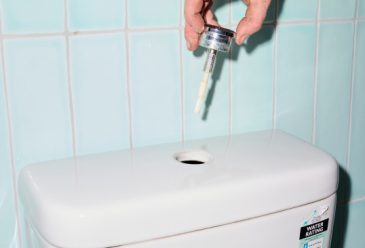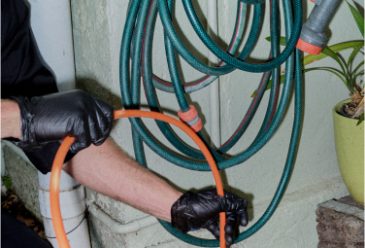A leaking pipe might not always start with a burst or a flood; it’s often more subtle than that. A drip under the sink, a mysterious damp patch on the wall, or a slightly higher water bill might be your only clues. But even a small leak can lead to big problems over time if left untreated.
Fixing a leaking pipe promptly helps you avoid water damage, mould growth, and costly repairs. It also conserves water, which is especially important in Australia, where every drop counts. According to Energy.gov.au, household leaks can waste thousands of litres each year if ignored.
In this guide, we’ll show you how to spot the warning signs of a leaky pipe, locate its source, apply quick fixes, and know when it’s time to call in the professionals.
Why Fixing a Leaking Pipe Quickly Is Important
While a leaking pipe might seem like a minor nuisance, the consequences can escalate quickly. Water doesn’t stay contained; it spreads through flooring, walls, insulation, and ceilings, often doing damage long before it’s noticed.
Unchecked leaks also create the perfect environment for mould and mildew to thrive, which can impact indoor air quality and trigger allergies or respiratory issues. On top of that, you could see a significant increase in your water bill.
According to Master Plumbers Australia, delaying pipe leak repairs is one of the most common causes of long-term structural damage in homes.
Common consequences of a leaking pipe
- Wall or ceiling stains
- Warped flooring or bubbling paint
- Mould and mildew growth
- Higher water bills
- Structural deterioration over time
How to Tell If You Have a Leaking Pipe
The earlier you detect a leak, the easier (and cheaper) it is to fix. Some signs are obvious, while others can go unnoticed for weeks.
Visible signs to look for indoors:
- Dripping or pooling water under sinks or near toilets
- Damp cabinets or musty smells around plumbing fixtures
- Stains or bulges on walls or ceilings
- Unexpected puddles near dishwashers, washing machines, or fridges with water lines
How to check for hidden leaks
To detect leaks that aren’t immediately visible, try this simple water meter test:
- Turn off all taps and water-using appliances.
- Take a reading from your water meter.
- Wait at least one hour (without using water), then check the meter again.
If the reading has changed, you likely have a hidden leak. You can find more water-saving and leak-detection tips at Water Corporation.
How to Find the Source of the Leak
Once you know you have a leaking pipe, the next step is locating its origin. This can sometimes be as easy as spotting a drip, or as tricky as tracking damp patches behind walls.
Listening for sounds
In a quiet room, listen for tell-tale signs:
- Dripping: Suggests a leak from a pipe or tap.
- Hissing or whooshing: Could indicate a pressurised leak in a wall or underground.
Checking specific problem areas
Start with common culprits:
- Under kitchen or bathroom sinks
- Behind toilets and near cisterns
- Outdoor taps and garden hoses
- Connections to washing machines and dishwashers
Use a paper towel or dry tissue to trace the path of the water. If it becomes damp, you’re getting closer.
Quick DIY Fixes for a Leaking Pipe
Temporary fixes won’t replace professional pipe leak repairs, but they can minimise damage and buy you time until a plumber arrives. The right method depends on the type of leak you’re dealing with.
Tools you’ll need
- Pipe repair tape (not duct tape)
- Epoxy putty
- Adjustable wrench
- Hose clamps or rubber patch
- Bucket and towel
Step-by-step temporary repair methods
For small pinhole leaks:
- Dry the leaky pipe.
- Wrap pipe repair tape tightly around the leak, overlapping by a few centimetres on each side.
For cracked or dripping joints:
- Turn off the water supply.
- Apply epoxy putty over the damaged area, smoothing it with a gloved hand.
- Let it cure before turning the water back on.
For larger cracks:
- Use a rubber patch over the leak and secure it tightly with hose clamps.
When to Call a Professional Plumber
Not all leaks can be fixed with tape and putty. Major pipe damage, burst lines, or leaks inside walls require professional tools and expertise.
Benefits of professional leak detection
Experienced plumbers use advanced equipment to find hidden leaks without ripping into walls:
- Thermal imaging cameras detect temperature differences caused by water.
- Acoustic sensors locate the exact sound of water escaping.
- Moisture meters assess how far the water has spread.
Calling in a licensed plumber early can prevent hundreds—or even thousands—of dollars in repairs.
Get in Contact with Good Hands Plumbing Today
If you’re dealing with a leaking pipe—or even if you’re just not sure—Good Hands Plumbing is ready to help. Our experienced team uses proven techniques and advanced technology to find and fix leaks fast, saving you time, money, and stress.
We also offer reliable advice, emergency services, and long-term plumbing solutions to keep your home in top shape.
FAQs
How much water can a small leak waste?
Even a slow drip can waste a surprising amount of water. A single dripping tap or pinhole pipe leak can lose up to 20 litres a day, or more than 7,000 litres a year. That’s enough to fill a small backyard pool, and it will definitely show up on your water bill.
Can I use duct tape to stop a leaking pipe?
Duct tape might slow the leak temporarily, but it’s not designed for plumbing use. It’s not waterproof enough and will eventually peel away. Use pipe repair tape, epoxy putty, or a hose clamp as a better alternative—and always call a plumber for a permanent fix.
How do I stop a pipe from dripping temporarily?
To control a pipe leak until help arrives:
- Turn off the water supply at the mains.
- Dry the pipe and apply pipe repair tape or a rubber patch with clamps.
- Place a bucket underneath to catch drips.
These are stop-gap measures, not long-term solutions.
Are leaking pipes covered by home insurance?
It depends. Most Australian home insurance policies cover sudden and accidental damage, such as a burst pipe. However, they often exclude claims related to gradual leaks or lack of maintenance. Check your policy wording carefully and keep up with regular plumbing inspections to avoid denied claims.
How do I know if a pipe has burst?
Signs of a burst pipe include:
- A sudden drop in water pressure
- A loud popping or hissing sound
- Large puddles or flooding
- Warped walls or ceilings
- An unexpectedly high water bill
If you suspect a burst, shut off the main water valve and call a plumber immediately.



